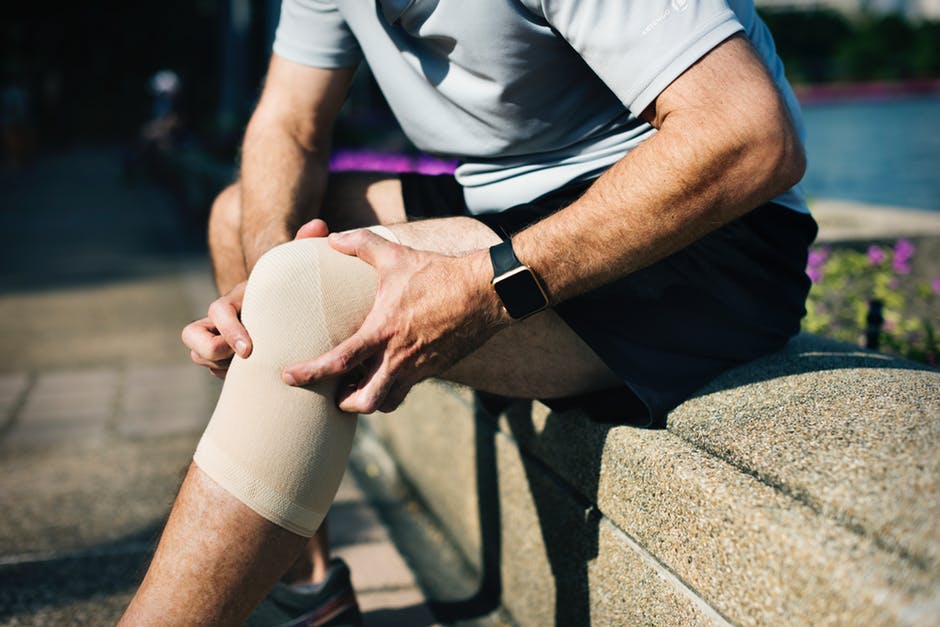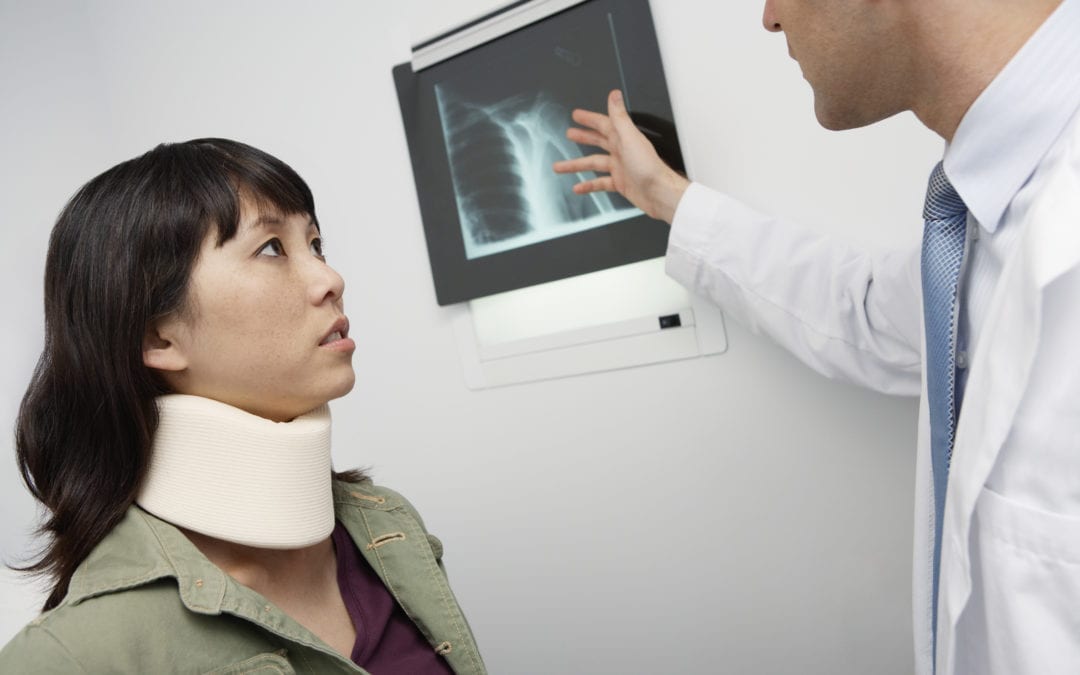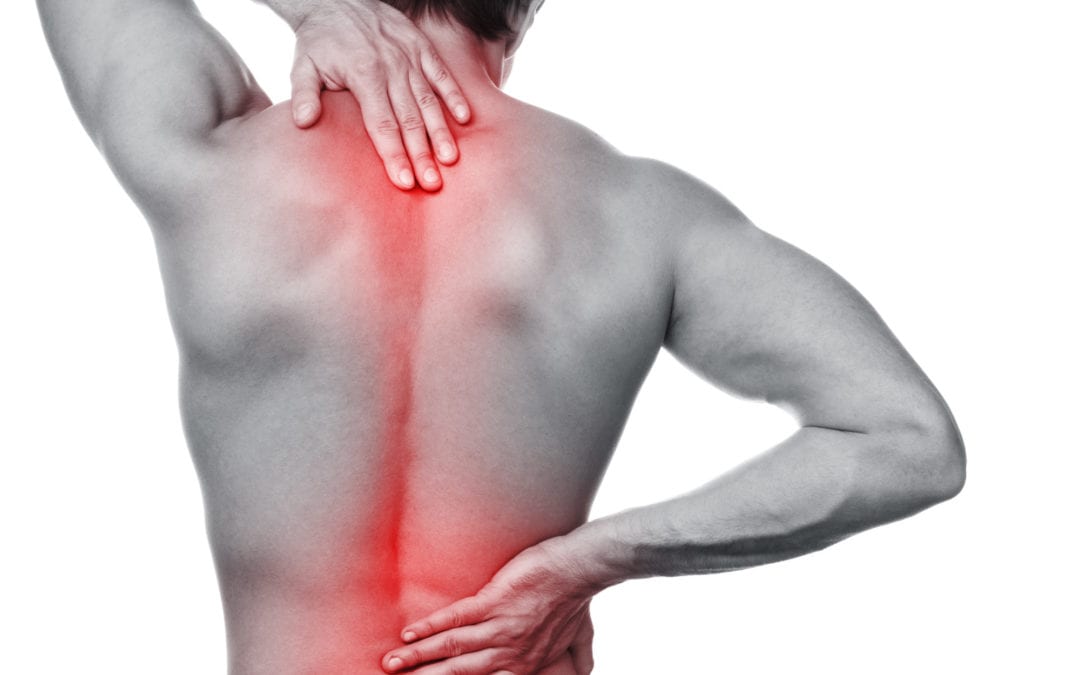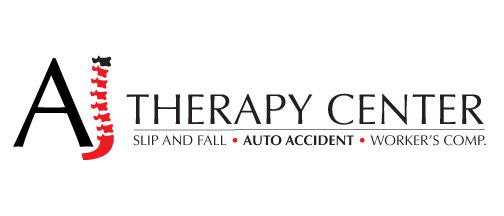
Car Accident
The physical therapy industry is enormous. In fact, the industry is valued at $30 billion and expected to grow 7 percent per year.
Many physical therapy patients are victims of a major accident. When this is the case, it begs the question whether physical therapy costs are included in a personal injury claim?
It is imperative to know this as the cost of physical therapy is high. Read on to learn more about the cost of physical therapy. Explore what physical therapy costs are included or invalid on a personal injury claim.
Physical Therapy Costs
Why is it necessary to claim physical therapy costs after an accident? The answer is simply that the cost of medical care is significant.
You likely need a ride to the hospital in an ambulance. If your accident is severe, the hospital may require you to stay overnight for an extended period of time.
Depending on the nature of your injuries, you may require diagnosis and treatment from several different doctors. Extensive testing is possible, as well as surgery and prescription drugs.
Many people mistakenly think this is the end of the medical bills. In reality, your recovery may take months or even years.
The cost of physical therapy sessions on a routine basis should not be underestimated. It would place an unnecessary financial burden on your family to pay for these costs alone. Instead, the best practice is to roll the medical bills from physical therapy into your personal injury claim.
Personal Injury Claims
Each state has different laws, but the widely accepted position is that the person responsible for your accident pays for physical therapy. The intent is to hold people accountable for careless or negligent driving.
The process starts with an official report stating who is responsible for the accident. It may be another person, business, or group.
The responsible party’s insurance is likely to pay for expenses up to the limit declared on their policy. However, that does not mean you are on the hook for expenses above this limit.
Instead, a legal professional will help you reach a cash settlement with the insurance company. This settlement will potentially cover physical therapy costs.
Tips for Recouping Physical Therapy Costs
To increase your odds of success, it is imperative to retain all receipts and records. Some insurance companies attempt to paint physical therapy as unnecessary.
Your lawyer will use this paper trail to prove that therapy was essential to your recovery. The records will include details of your therapy sessions and progress that you are making. The receipts, on the hand, create a log of costs that you have incurred to return to a pre-accident health state.
Cost of Physical Therapy – A Recap
A major accident can diminish your health and quality of life. Medical costs do not stop at the hospital, and in many cases, extensive physical therapy is required. This may be the only way to restore your body and movements to a pre-accident condition.
If you want to learn more about the cost of physical therapy, contact us today to schedule an appointment.

Car Accident
As amazingly complex the human body is, sometimes things can go terribly wrong.
The knee, in particular, is a highly complex, weight-bearing joint which unfortunately means it’s highly prone to injury.
The bones, tendons, and ligaments that make up the knee can become strained, sprained, torn, or inflamed. This can cause anything from annoying clicking and cracking, to debilitating pain that leaves you unable to walk.
When you’ve got a pain in your knee, it’s best to treat the problem ASAP to prevent further damage. No matter your type of injury, you should always start by finding a licensed physical therapist to work on your recovery or pain management program together.
That said, here are 7 of the most common knee injuries and how best to treat them.
1. Anterior cruciate ligament (ACL) Injuries
A torn ACL is a common complaint of elite athletes, but anyone can tear or sprain their ACL. This painful injury is caused by a tear in the ligament that runs diagonally down the front of the knee.
Treating your torn ACL depends on the severity (grade) of your injury, but commonly requires rest and light stretching/strengthening. More severe injuries may require surgery.
2. Torn Meniscus Knee Injuries
Your meniscus is a thin piece of cartilage on either side of where your tibia bone meeds your shin bone, inside your knee joint just under your patella (knee cap). It provides cushioning for the smooth movement of your knee.
A torn meniscus is commonly due to a twist of the knee during contact sports. Treatment for a torn meniscus starts off with rest, ice, and OTC medications such as ibuprofen. Physical therapy is often needed to regain strength after a bad tear. Sometimes, surgery is also needed.
3. Dislocation of the Knee Joint
Dislocating your knee will be incredibly painful and always requires emergency treatment. This happens when the joint comes apart forcefully, usually during a major trauma like a car accident.
Ongoing treatment from a dislocation will almost always require physical therapy to regain the full range of motion and stability in your knee.
4. Tendonitis and tendon tears
Tendon injuries in the knee can be frustrating to properly diagnose and treat. Symptoms are typically sharp pain, decreased range of motion, knee stiffness, a clicking or popping sound, and warmth or swelling at the sight of the injury.
Treatment for tendonitis and tendon strains include resting and ice with gentle stretches. Tendon tears usually require more involved treatment, sometimes surgery
5. Knee Fractures
Fractures in the knee in younger people can be caused by contact sports, accidents, or falls. In older people, it can be due to arthritis or osteoporosis.
Knee fractures are treated by immobilizing the knee joint as much as possible until the bone heals itself, with the use of knee bracing and sometimes crutches or a wheelchair.
6. Knee Bursitis
Bursitis of the knee is a painful condition that causes irritation and stiffness in the back of the knee joint. Bursitis is caused by swelling in the bursae, the small sacs of fluid that cushion the outside of your knee joint.
Treatment for bursitis typically includes anti-inflammatory medications, steroid injections, and physical therapy.
7. Iliotibial Band Syndrome
The Iliotibial band, commonly known as the IT Band, is a ligament that runs from your thigh to just under the knee joint on the outside of the knee. IT band syndrome causes pain and swelling on the side or back of the knee joint, as well as stiffness that runs up the thigh.
IT band syndrome causes instability, so treatment consists of reducing intensive use of the knee while stretching and increasing flexibility. Anti-inflammatories can be taken as needed to reduce swelling and ice should be applied in the first 48 hours of injury.
Final Thoughts
Don’t ignore a nagging knee pain — it could be an injury that needs attention before it gets worse.
If you’re experiencing pain associated with knee injuries that need professional help, contact us to set up an appointment to speak with a physical therapist.

Car Accident
The latest Bureau of Labor Statistics report indicates that 2.8 million nonfatal workplace injuries and illnesses were reported in 2017. That means that for every 100 employees, 2.8 get hurt at work.
Read on to learn what to do if you suffer from a workplace injury.
Report the Injury to Your Supervisor
If you get hurt at work, the first thing you need to do is report your injury to your supervisor.
If there is a problem with the safety of your workplace, your supervisor can then take steps to ensure no one else is hurt.
As soon as you can, submit your injury in writing to your manager. Even if you have verbally reported it already. This will ensure that you aren’t denied workers compensation benefits.
You will also need to fill out a form if you decide to request workers’ compensation.
Seek Medical Attention
The next thing to do if you are injured at work is to visit a work injury clinic to get a medical examination. Often, the injury is not apparent right away.
At AJ Therapy Center, you will have a comprehensive medical exam. A doctor will test your reflexes, range of motion, posture and look for neurological and orthopedic concerns. If needed, we will order extra tests such as X-rays, MRIs, and CT scans.
Once you have an exam, our team will create an individualized treatment plan for you to help you return to full functionality.
Keep Your Records and Receipts
One of the most important things to do when you are injured at work is to keep an excellent paper trail.
Keep a copy of prescriptions, doctor’s summaries, receipts and out-of-pocket costs for everything. You will need this documentation when you file for workers’ compensation.
File for Workers’ Compensation
If you suffer a workplace injury, regardless of who is at fault, you may be eligible for monetary compensation.
This compensation covers the cost of medical bills and lost wages.
Filing a workers’ compensation claim is similar to filing any other insurance claim. This claim is a request for benefits. It is not a lawsuit against your employer.
Ask HR for the form you’ll need to submit this claim.
In most cases, when you get workers’ compensation, you lose the right to file a lawsuit against your employer for damages. Your work injury clinic or hospital may also have a copy of this form.
Only fill out the employee section of this form. Make sure you date and sign it. Keep a copy of this form for your records.
Then, return the claim form to your employer. You can send it by mail or give it in person. If you decide to mail it, it’s best to use certified mail with a signature request to ensure delivery.
Don’t delay filing this form. You shouldn’t have to wait any longer than necessary for your benefits.
Act Fast After Your Workplace Injury
We hope this article has given you the steps you need to take after a workplace injury.
Remember, it’s better to be safe than sorry. Even if you feel fine after you get hurt at work, make an appointment for a medical exam.
Contact us to schedule your initial appointment today.

Car Accident
If your physical therapist reaches for the goniometer, don’t panic! It’s not an ancient instrument of torture but, in fact, a helpful indicator of your progress to full health.
This quick guide will help you to understand the uses of a goniometer and why your physical therapist may want to use one on you. Keep reading to find out everything you need to know about this simple, but incredibly useful, gadget.
What Is a Goniometer?
A goniometer looks like two straight rules attached at one end to create a hinge.
It’s sometimes made of metal but more commonly is transparent plastic to make it easy to use. There are several markings on the arms to help with measurements.
The simple device is used to measure the range of motion in a joint. The hinge is placed on the center of the joint. When the joint is flexed, the markings on the arms help to measure the full range of motion.
Why Is It Useful?
A physiotherapist uses a combination of stretches, manipulation, and massage to improve the function of a joint or muscle. They need to know the treatment plan they’re implementing for each patient is working.
Goniometers help your physiotherapist assess the range of motion in your troublesome joint before surgery or prior to starting a series of treatment sessions with you.
A physical therapist also needs a way to measure the progress of their work with you. A goniometer is a great tool to easily measure improvements in range of motion. It’s portable, uses standard measurements, and doesn’t require any batteries or power to work.
Are Digital Goniometers Available?
As well as the simple hinge-style goniometer, wearable digital versions are also available. These are ideal for complex or hard-to-assess joints, and help to demonstrate the real range of motion in a joint.
When the joint is static, such as when you’re lying on a table, your physiotherapist can manipulate the range of motion. However, this range will alter in different postures, such as standing up or bending at the knee. A digital goniometer measures the functional range of motion with accuracy.
What Causes Range of Motion Difficulties?
You may not think you have a range of motion problem but they can occur for a wide range of reasons. Regular sitting at a desk, for example, can restrict the range of motion in your shoulders.
More commonly, range of motion problems occur from injuries such as those caused by automobile accidents or sporting incidents. Some diseases, such as arthritis, can also cause range of motion difficulties.
Restriction in the motion of a joint may not sound like a big problem. However, a lack of flexibility can limit your ability to carry out daily tasks. It can also have an impact on other parts of your body, causing referred pain as other joints and muscles have to work harder to make up for the limited joint.
How Do I Know If My Range of Motion Is Limited?
If you’ve been struggling with pain relating to previous injuries or chronic overuse, it’s time to see a physiotherapist.
Your physical therapist will use a goniometer to test your joints for range of motion. This will reveal imbalances in your joints and limbs so that your physiotherapist can devise a personalized treatment plan.
Book a consultation today to start your journey to having pain-free and fully functional joints once again.

Car Accident
Your body is made up of many joints from your knees and elbows to your fingers and toes. Many people have the ability to bend these joints beyond the norm and have a condition known as joint hypermobility.
You’ve likely met or seen people with hyperextended joints and didn’t realize it. The condition is also called double jointed by many people. People often do it to “gross” people out in school and show off their unique abilities.
Learn all about this complex condition and how it impacts your body over time. It’s not all fun and games when it comes to loose ligaments.
What Are Hyperextended Joints?
Joints on the human body have a clinically accepted normal range of motion. If a person is able to extend their joint further than that normal range, then they have hyperextended joints.
It could be arms that go beyond straight, legs that bow backward or fingers that extend further than 90 degrees.
Most of the time, the hyperextension is painless, which is often why people do it for fun when they’re children. As people get older or even when they are children, using the joints in an activity or sport can lead to soreness and inflammation.
Children with loose joints often do well in gymnastics and other sports that require elevated flexibility.
Diagnose and Treatment of Hypermobile Joints
If you’re experiencing pain in your joints after exercising, etc., then contact your doctor. He’ll perform tests to confirm the problem is hypermobile joints. He’ll extend the impacted joints to visually confirm the issue and may follow up with X-Rays or other tests to verify the joint structure.
There are no medications available to treat joint pain. The best remedy is to strengthen the muscles around the joint. This is why the issues often resolve themselves in children because the muscles strengthen naturally as they get older.
Also, stop any activities if you notice swelling or pain in your joints to keep from aggravating it.
Problems Stemming from Loose Joints
While many people go their whole lives without any issues, there are some that can develop medical issues connected with their hypermobile joints. The symptoms of sore joints often look like that of arthritis.
It’s important the doctor knows of your condition and doesn’t misdiagnose it as arthritis. People with hyperextended knees may require a brace or even surgery to fuse the joint if the extension continues to go further as time goes on.
Increased weight or extended use over time may weaken the muscles further and lead to the joint bowing back further.
People with shoulder and kneecap loose joints may wear down the cartilage or cause damage by dislocating the joints.
This is why it’s important to contact a doctor immediately if your joints become sore after exercise or other activities and get physical therapy.
Loose Joints Are Perfectly Normal
Hyperextended joints are perfectly normal, especially in childhood, so don’t worry about having it. It should only be a concern if you notice pain or swelling in the areas.
If you would like to learn more about loose joints or physical therapy, then explore our site.

Car Accident
Every year, approximately 30% of all road collision injuries seen in emergency departments involve back strains and spinal injuries.
Even a small rear-end collision can result in back pain that causes trouble for years on end. Over 800,000 adults report whiplash symptoms every year after an accident, even from low-speed collisions under 10mph.
Back pain after a car accident should always be investigated by a doctor to make sure you haven’t suffered life-changing injuries.
However, if your pain is the result of whiplash or a minor back injury, there are things you can do to reduce pain while the injury heals.
4 Ways to Manage Back Pain After a Car Accident
There are plenty of things you can do to manage your back pain or whiplash after a collision.
After your doctor has given you the go-ahead, try these pain management tips to reduce your back pain after a car crash.
1. Rest, Ice, and Heat
Rest is vital for the healing of your back injury. Take time off work to make sure you’re not sitting at a desk or on your feet all day.
Ice and heat can help to reduce back pain. Some people prefer ice, others heat – you’ll need to test which one is best for you.
Immediately after your accident, ice packs applied for 15 minutes to the injured area will help to reduce swelling. Don’t apply heat to the area for a few days at first, as this can increase swelling and bruising.
Heat can, however, soothe tense muscles that tighten up as you struggle to manage your pain. You’ll naturally avoid moving the injured area, which leads to tense and rigid muscles. A hot water bottle can help to improve blood flow and reduce the tension, which will minimize your pain.
2. Painkillers
Over-the-counter painkillers such as ibuprofen will help to reduce inflammation. However, if you find that you need painkillers for more than a week, speak to your doctor.
Once your back injury has been medically assessed, you may be given stronger prescription painkillers.
If you are provided with prescription-strength painkillers, be aware that you may not be able to drive while you’re taking them.
3. Gentle Exercise
You may feel like you don’t want to move at all, but gentle exercise can help to reduce your back pain after a collision.
Exercise such as walking around the block a few times a day will help to retain your muscle strength and improve blood flow to knotted and tense muscles in the injured region.
It’s important to retain muscle strength, especially around back injuries, as strong muscles support your spine to reduce long-term back pain.
4. Massage Therapy
A massage therapist will show you simple exercises for you to complete at home on a daily basis. These stretches and exercises will help you to stay flexible and build your muscle strength to support the injured area.
Therapy treatments can also include manual therapy. This helps to reduce tension and stimulate circulation to tense areas.
If you have a back injury after a collision, make sure your therapist knows this before they treat you. They’ll be able to adapt their massage and exercises to accommodate your injury.
Find a Physician for Expert Back Pain Relief
The best way to treat back pain after a car accident is to visit a physician with expert knowledge about specific treatments for injuries sustained in automobile collisions.
From paraffin baths to manual manipulation of your back, there are many ways our team can help to reduce your back pain. We even understand how hard it can be to get to appointments when your pain means you can’t drive – that’s why we offer a free shuttle service to your appointment.
Contact us now to find out more about our specialized treatment programs for back injuries caused by road accidents.






